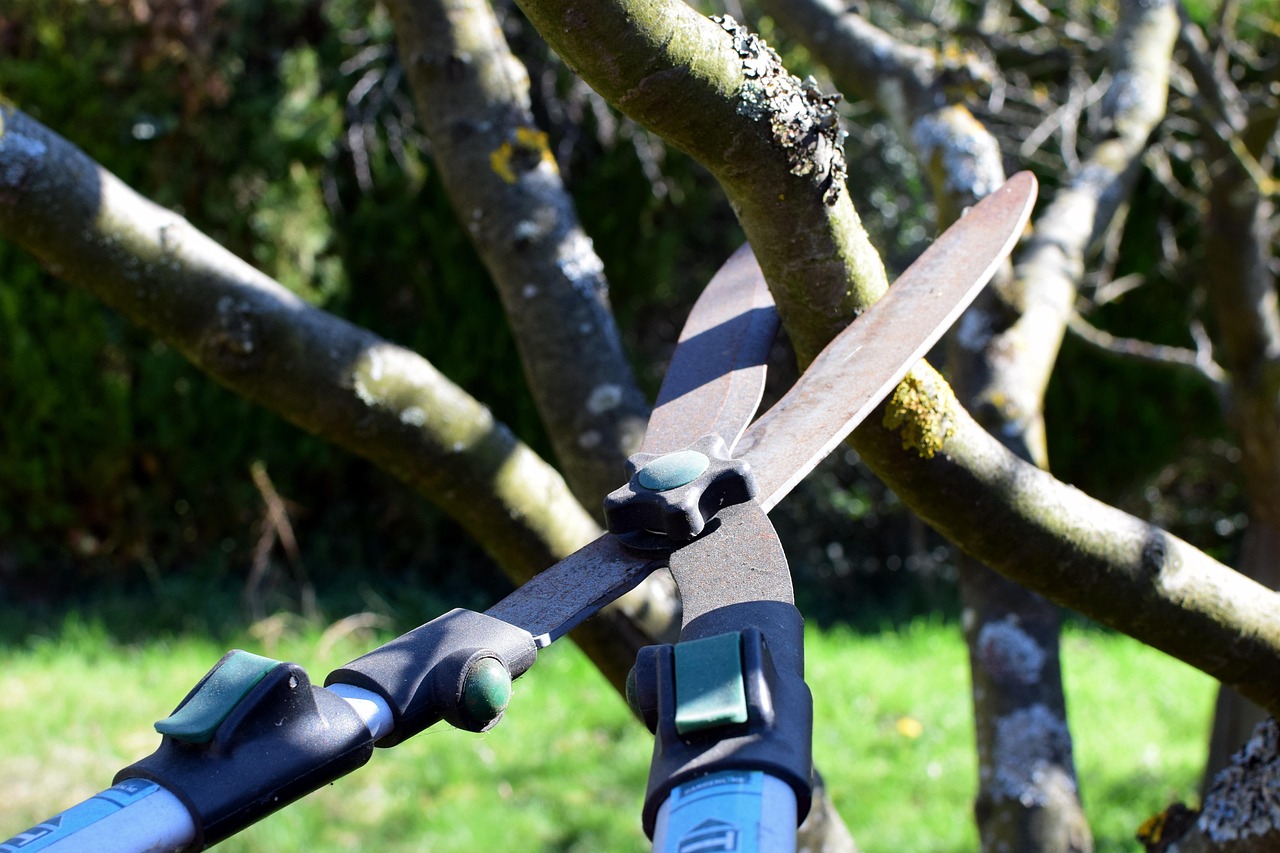Forest tree pruning is a critical practice that enhances timber and wood yield. By selectively removing branches, it increases sunlight penetration and air circulation, promoting healthier growth and improving overall wood quality.
Forestry is an essential industry that provides timber, fuel, and various forest products. The practice of pruning trees is an important aspect of forest management. It helps to shape the structure of the trees while also improving their health. Understanding the benefits and techniques of forest tree pruning can lead to significantly improved timber and wood yield.

Pruning involves the removal of specific parts of a tree, particularly branches. This process can help to focus the tree’s energy on growing fewer, higher-quality branches. Pruning is not just about cutting; it requires knowledge and skill to ensure the tree remains healthy while maximizing yield.
There are several reasons why forest tree pruning is vital. First, it allows better access to light, which is crucial for photosynthesis. Second, it improves air circulation within the canopy, reducing the risk of disease. Third, it helps in shaping the tree for better timber quality. Lastly, it can enhance the overall aesthetic value of the forest.
Benefits of Forest Tree Pruning
Pruning offers numerous benefits that contribute to improved timber and wood yield. Below are some key advantages:

- Enhanced Growth: Pruning stimulates new growth by allowing more sunlight to reach younger branches.
- Improved Wood Quality: By focusing resources on fewer branches, the wood produced is typically denser and more valuable.
- Increased Resistance to Pests: Thinning the canopy reduces humidity, leading to lower pest populations.
- Better Shape and Structure: Properly pruned trees develop a strong central leader and balanced branch structure, which is ideal for timber production.
In addition to these benefits, research has shown that well-pruned trees can produce higher yields over time. A study conducted by forestry experts indicated that trees subjected to regular pruning can achieve up to 30% more timber volume compared to unpruned counterparts.
| Pruning Technique | Benefit | Best Practices |
|---|---|---|
| Crown Thinning | Improves light penetration | Remove less than 30% of branches |
| Crown Raising | Enhances access to the lower branches | Remove lower limbs gradually |
| Crown Reduction | Controls tree height and spread | Aim for natural shape; avoid excessive cutting |
The timing and method of pruning are crucial for achieving the best results. Generally, pruning is best done during the dormant season in late winter or early spring. This timing minimizes stress on the tree and allows it to heal quickly once new growth begins.
Different species of trees may respond differently to pruning. It is essential to research specific requirements for each type of tree you are managing. Additionally, improper pruning can lead to negative effects such as increased susceptibility to disease or stunted growth.

Forest managers should also consider their long-term goals when deciding how to prune. For example, if the aim is to produce high-quality timber, then a more selective pruning strategy may be necessary. On the other hand, if the focus is on biomass production, different practices might be more appropriate.
Regular monitoring of pruned trees can further enhance outcomes. By observing growth patterns and assessing wood quality over time, forest managers can adjust their strategies based on actual performance. This ongoing evaluation helps in fine-tuning pruning practices for optimal results.
In conclusion, forest tree pruning is a fundamental practice for improving timber and wood yield. It requires careful planning and execution but pays off with healthier trees and higher-quality timber. Understanding the benefits and techniques involved can empower forest managers to make informed decisions that enhance productivity in their woodlands.

Pruning Techniques and Their Applications
Understanding the various pruning techniques is vital for maximizing timber and wood yield. Each method serves specific purposes and can be adapted to different tree species and growth conditions. Below are several common pruning techniques used in forest management:
Crown Thinning
Crown thinning involves selectively removing a portion of the branches in the upper canopy of a tree. This technique aims to improve light penetration and air circulation within the tree’s crown. By allowing more light to reach lower branches, crown thinning promotes healthy growth and reduces competition among branches.
- Benefits:
- Enhances overall tree health.
- Encourages better growth of desirable timber.
- Reduces the risk of disease by improving airflow.
- Best Practices:
- Aim to remove no more than 30% of the total crown mass.
- Focus on removing weak or crossing branches.
- Maintain a balanced shape to prevent structural issues.
Crown Raising
Crown raising is the process of removing lower branches from a tree, allowing for increased clearance underneath. This technique is particularly useful in areas where space is limited or where machinery needs to operate under trees.
- Benefits:
- Improves access for harvesting equipment.
- Enhances visual appeal in recreational areas.
- Reduces competition from lower branches, allowing for better growth of the tree.
- Best Practices:
- Remove lower branches gradually over several years.
- Avoid cutting too many branches at once to prevent shock.
- Ensure cuts are made just outside the branch collar to promote healing.
Crown Reduction
Crown reduction is used to decrease the height and spread of a tree’s crown. This technique is particularly beneficial for trees that may pose a risk to structures or power lines. It also helps in maintaining a desirable shape while encouraging healthy growth.
- Benefits:
- Reduces the risk of storm damage by minimizing wind resistance.
- Makes the tree safer in urban environments.
- Promotes growth of new shoots, resulting in better timber quality.
- Best Practices:
- Aim for a natural shape; do not top the tree.
- Make cuts at the branch collar to facilitate healing.
- Limit reductions to about 25% of the crown size at any one time.
Seasonal Considerations for Pruning
The timing of pruning can greatly influence its effectiveness. Seasonal conditions affect tree physiology and can impact healing rates. Here are some important considerations:
Winter Pruning
Winter is often considered the best time for pruning many tree species. During this dormant period, trees conserve energy and can recover more quickly from cuts. Additionally, visibility is improved during winter months when leaves have fallen, allowing for easier assessment of branch structure.
- Advantages of Winter Pruning:
- Reduced risk of disease transmission, as many pathogens are dormant.
- Easier access due to lack of foliage.
- Pests are less active, minimizing potential damage during the process.
Summer Pruning
Summer pruning can also be beneficial, particularly for certain species and specific goals. This technique is often used to control size and shape or to remove unwanted growth.
- Advantages of Summer Pruning:
- The immediate response of trees to pruning can be observed.
- Pruning during the growing season can help shape young trees more effectively.
- This method can control excessive growth and promote desired branching patterns.
Monitoring and Assessment Post-Pruning
After pruning, it is essential to monitor the trees for signs of recovery and growth. Regular assessments can help forest managers understand the effectiveness of their practices and make necessary adjustments. Key aspects to monitor include:
- Growth Rate: Measure the growth of pruned branches over time to evaluate success.
- Pest Activity: Keep an eye out for any increase in pest populations that could result from stress.
- Wood Quality: Assess the density and health of new wood produced after pruning.
By implementing these techniques and considerations, forest managers can greatly enhance the quality and yield of timber produced from their forests. Continuous learning and adaptation are crucial components of effective forest management practices.
